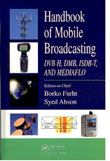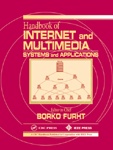Handbook of HSDPA/HSUPA Technology
CRC Press, Taylor & Francis Group
Editors: Borko Furht, Florida Atlantic University and Syed Ahson, Microsoft
 |
 |
Potential contributors:Send an email to:borko@cse.fau.edus.ahson@att.net
|
 |
||
 |
 |
 |
Handbook of HSDPA/HSUPA Technology CRC Press, Taylor & Francis Group Editors: Borko Furht, Florida Atlantic University and Syed Ahson, Microsoft
|
||||||||||||||
|
||||||||||||||
CRC Press, a member of Taylor & Francis Group, is launching a new Handbook of HSDPA/HSUPA with the main objective to provide comprehensive articles (18-36 pages) by world experts in the field. The Handbook will contain 20+ articles. The CRC Press is committed to create a successful Handbook and therefore it intends to support it with a large marketing and advertising effort. Potential contributors should express their interest by sending an email to Borko Furht and Syed Ahson at borko@cse.fau.edu and s.ahson@att.net.
DESCRIPTION High-Speed Downlink Packet Access (HSDPA) is a 3G (third generation) mobile telephony communications protocol in the High-Speed Packet Access (HSPA) family, which allows networks based on Universal Mobile Telecommunications System (UMTS) to have higher data transfer speeds and capacity. Current HSDPA deployments support down-link speeds of 1.8, 3.6, 7.2 and 14.4 Mbit/s, and can provide each customer with 30 gigabytes of data per month.
SCHEDULE
Contributors solicited and TOC defined September/October, 2008
Chapters delivered April 1, 2009
First draft of Handbook completed April 15, 2009
Final reviews completed May 15 , 2009
Handbook delivered to the Publisher May 30, 2009
Handbook production and pageproofs June 1, 2008 - September 1, 2009
Handbook published Fall 2009
Links to important documents
TOPICS OF INTERESTS
(Other topics are aslo welcome)
Fundamentals
- 3G Mobile Systems evolution
- Mobile broadband deployment strategies and demand analysis
- Coexistence of WCDMA (Wideband Code Division Multiple Access) and HSDPA (High Speed Downlink Packet Access)
- WiMAX and HSDPA Coexistence
- Receiver architecture for HSDPA/HSUPA
HSDPA/HSUPA Principles
- Adaptive modulation and coding (AMC)
- Hybrid Automatic Repeat Request (HARQ)
- Packet scheduling and scheduling algorithms
- Symbol mapping diversity and power adjustment for HSDPA/HSUPA
- Turbo-Coded HSDPA/HSUPA Systems
- Chip level equalization
- Radio Frequency (RF)-receiver design
- Advanced receivers based on normalized least mean square (NLMS) equalizers
- Multiple-input multiple-output (MIMO) in HSDPA/HSUPA system
Technologies
- Channel quality indication (CQI) reporting
- Radio Channel Estimation Schemes
- QoS support for services such as streaming, gaming, and VoIP
- Bandwidth management techniques for allocation of radio access network resources
- Circuit switched services on HSDPA/HSUPA
- Transport control protocol (TCP) layer and the radio interface in HSDPA/HSUPA wireless system.
Bit Rates, Capacity and Coverage
- Models to evaluate HSDPA/HSUPA cell capacity and user bit rate
- Performance Studies
- Enhancing HSDPA/HSUPA network performance
- RF repeaters to improve HSDPA/HSUPA coverage
- Guidelines for Coverage and Capacity Planning
- Antenna configurations
- Measurement results for HSDPA/HSUPA
- Conformance Metrics and Evaluation of HSDPA/HSUPA Systems
Applications
- Multimedia services over HSDPA/HSUPA
- VoIP
- Mobile TV